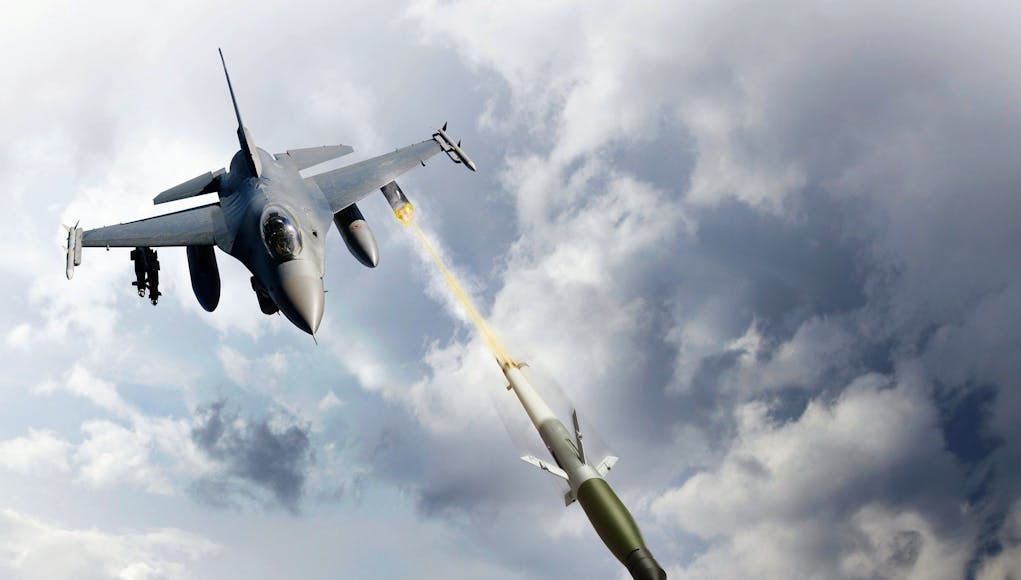A US Air Force F-16 has shot down a subscale drone using an AGR-20A Advanced Precision Kill Weapon System (APKWS) laser-guided rocket.
The US Air Force say this provides a proof of concept for using rockets queued from an F-16 targeting pod as viable munitions to perform cruise missile defence.
“The test was unprecedented and will shape the future of how the Air Force executes CMD,” said Col. Ryan Messer, commander, 53d Wing.
“This is a prime example of how the 53d Wing is using resources readily available to establish innovative ways that enhance combat capabilities for our combat units.”
Originally developed as a low cost, low collateral damage air-to-ground weapon for use in Afghanistan and Iraq, adapting the AGR-20A for counter-air use is momentous say the US Air Force.
“The AGR-20A is a fraction of the cost of an AIM-120 missile commonly used for cruise missile defense. Additionally, the AGR-20A can be loaded faster than an AIM-120 and an aircraft can carry two-to-three times the number weapons.”
BAE Systems was recently awarded a $2.68 billion contract for thousands of APKWS Laser-Guided Rockets.
Following a US Department of Defense announcement in September 2019, BAE Systems announced that the US Navy has signed a $2.68 billion indefinite delivery/indefinite quantity contract for the purchase of thousands of additional APKWS Laser-Guided Rockets.
APKWS rockets fill the gap between unguided rockets and large precision munitions. BAE say that APKWS guidance kits are compatible with new inventories of rocket motors, warheads, and launchers, and easily transform unguided rockets into precision munitions with little training, say the firm.














A very useful addition no doubt. Even more so on a tight budget!
This could transform carrier defense. Presumably these could swarm after anything incoming, including hypersonics if it can be illuminated.
Rippling hundreds of these off is going to stop anything. Its all software algorithms.
True. However to illuminate so many targets with a laser is a mighty task. How many could be illuminated and tracked by the carrier group??
Commercial Lidar has as many as 1024 points of laser light.
This will encourage the use of suas on the battlefield as they are almost impossible to shoot down being the size of a phone
Swedish University of Agricultural Sciences. Yes they can be lethal I hear.
Close but actually small drones for small unit Ariel system made by a Norweigian firm.Used by infantry to detect same.First used by British commandoes in Afghanistan 2016 for survielience of cave entrances etc now picked up by socom with modifications my point being that a race for smaller drones could occur.
The issue is keeping the target illuminated, not very good against swarms and requiring you to maintain visual contact until kill.